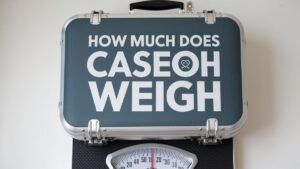In the world of fashion, vintage-style clothing has always held a special place. But have you ever wondered how manufacturers achieve that perfect worn-in look and incredibly soft feel? The secret lies in a fascinating process involving tiny molecular machines called enzymes. In this comprehensive guide, we’ll explore what enzymes will soften cloths and make them vintage, diving deep into the science and art of fabric enzyme.
Understanding Enzymes in Textile Processing
Before we delve into the specifics of how enzymes work their magic on fabrics, let’s start with the basics. Enzymes are natural proteins that act as catalysts, speeding up chemical reactions without being consumed in the process. In the textile industry, these microscopic workhorses play a crucial role in various processes, including fabric softening and creating vintage effects.
The Science Behind Enzyme Action
Enzymes in textile processing work by breaking down specific molecules in fabric fibers. This process, known as hydrolysis, can alter the surface properties of the fabric, leading to softening and the appearance of aging. Different types of enzymes target different components of the fabric, allowing for precise control over the final result.
“Enzymes are nature’s own nanotechnology, capable of transforming fabrics at the molecular level.” – Dr. Emma Whitaker, Textile Scientist
Types of Enzymes Used in the Textile Industry
Several enzymes are commonly used in fabric processing, each with its unique properties and effects:
- Cellulases: These enzymes break down cellulose fibers, primarily used in cotton and other plant-based fabrics.
- Proteases: Targeting protein-based fibers like wool and silk, proteases can soften and modify these materials.
- Pectinases: These remove pectin from natural fibers, improving absorbency and softness.
- Lipases: Useful for removing oily residues, lipases can improve fabric cleanliness and preparation for further treatments.
Key Enzymes for Softening and Vintage Effects

When it comes to what enzymes will soften cloths and make them vintage, cellulases are the star players. Let’s take a closer look at how these enzymes work their magic on cotton fabrics.
Cellulases: The Fabric Softeners
Cellulases come in two main varieties:
- Acid cellulases: Operating in acidic conditions, these enzymes are particularly effective at creating a vintage look.
- Neutral cellulases: These work at a neutral pH and are gentler on fabrics, making them ideal for general softening.
Both types of cellulases work by breaking down the surface fibers of cotton, removing fuzz and creating a smoother texture. This process, known as bio-polishing, not only softens the fabric but also enhances its appearance and durability.
The Bio-Polishing Process
Bio-polishing is a key technique in answering what enzymes will soften cloths and make them vintage. Here’s a step-by-step breakdown of the process:
- Fabric pre-treatment
- Application of cellulase enzymes
- Incubation period (allowing enzymes to work)
- Washing to remove loose fibers
- Drying and finishing
This process results in a fabric that’s not only softer but also has reduced pilling and a cleaner surface appearance.
Achieving the Vintage Look with Enzymes
Creating a vintage appearance involves more than just softening. It requires a controlled degradation of fibers to mimic the effects of age and wear. This is where the enzyme process truly shines.
Controlled Degradation for Authentic Aging
By carefully managing the intensity and duration of enzyme treatment, textile processors can create a range of vintage effects:
- Light fading
- Localized wear patterns
- Overall softening and draping
The key is to strike a balance between achieving the desired look and maintaining the fabric’s integrity.
Case Study: Denim Distressing
One of the most popular applications of enzymatic treatments is in creating distressed denim. Here’s how it works:
- Denim garments are washed with cellulase enzymes
- Enzymes attack the indigo dye bonds and cellulose fibers
- Areas of high friction (knees, pockets) show more wear
- The process is stopped when the desired level of distressing is achieved
This enzyme process produces a more natural-looking distressed effect compared to traditional methods like stone washing.
Benefits of Enzymatic Treatment in Fabric Processing

The use of enzymes in textile processing offers numerous advantages over traditional chemical methods. Let’s explore some of the key benefits:
Eco-Friendly Alternative
Enzymatic treatments are a cornerstone of sustainable practices in the textile industry. Unlike harsh chemicals, enzymes are:
- Biodegradable
- Non-toxic
- Effective at lower temperatures, reducing energy consumption
This makes enzyme processes a more environmentally friendly option for fabric softening and vintage effects.
Improved Fabric Quality
Enzymes don’t just soften fabrics; they can also enhance overall quality:
- Reduced pilling
- Improved color brightness
- Enhanced fabric strength in some cases
Customizable Results
One of the most significant advantages of using enzymes is the ability to fine-tune results. By adjusting factors like enzyme concentration, treatment time, and temperature, manufacturers can achieve a wide range of effects from subtle softening to dramatic vintage looks.
Challenges and Considerations in Enzymatic Fabric Treatment
While enzymes offer many benefits, there are also challenges to consider when using them to soften cloths and create vintage effects:
Balancing Softness and Integrity
Over-treatment with enzymes can lead to excessive fiber degradation, weakening the fabric. Skilled technicians must carefully control the process to achieve the desired softness without compromising durability.
Controlling the Vintage Effect
Creating a consistent vintage look across large batches of fabric can be challenging. Factors like fabric weave, dye type, and pre-existing wear can all affect how enzymes interact with the material.
Cost Considerations
While enzymatic treatments can be more cost-effective in the long run due to reduced water and energy usage, the initial investment in enzymes and equipment can be higher than traditional methods.
Innovations in Enzyme Technology for Textiles

The field of textile enzymology is constantly evolving. Here are some exciting developments:
Engineered Enzymes
Scientists are developing custom enzymes tailored for specific fabric types and effects. These engineered enzymes promise even greater control and efficiency in fabric processing.
Combination Treatments
By combining different types of enzymes, processors can achieve complex effects that mimic years of natural wear and washing.
Sustainable Enzyme Production
Advances in biotechnology are making enzyme production more sustainable, with some companies using waste products from other industries as feedstock for enzyme-producing microorganisms.
DIY Enzymatic Treatments: Bringing Vintage Style Home
For the fashion enthusiasts wondering what enzymes will soften cloths and make them vintage at home, there are some safe options available:
Safe Enzymes for Home Use
- Cellulase-based laundry boosters
- Natural sources of enzymes like pineapple and papaya
Step-by-Step Guide for DIY Vintage Looks
- Choose a cellulase-based product
- Pre-wash the garment to remove dirt and oils
- Prepare an enzyme bath according to product instructions
- Soak the garment for the recommended time
- Rinse thoroughly and air dry
Caution: Always test on a small, inconspicuous area first and follow product instructions carefully.
The Future of Enzymatic Fabric Processing
As we look to the future, several trends are shaping the use of enzymes in textile processing:
Emerging Trends in Sustainable Fashion
- Increased demand for eco-friendly production methods
- Growing interest in upcycling and recycling fabrics
- Development of closed-loop enzyme systems for minimal waste
Potential for New Enzyme Discoveries
Researchers are constantly exploring new sources of enzymes, including extremophiles (organisms living in extreme environments) that may offer unique properties for fabric treatment.
Integration with Other Textile Technologies
The combination of enzymatic treatments with other innovative technologies like plasma treatment or digital printing opens up exciting possibilities for fabric design and functionality.
Conclusion: The Enzyme Revolution in Textiles
In answering what enzymes will soften cloths and make them vintage, we’ve explored a fascinating intersection of biology, chemistry, and fashion. Enzymes offer a powerful, eco-friendly tool for creating soft, vintage-look fabrics that meet the demands of modern consumers and sustainable production practices.
As the textile industry continues to evolve, enzymatic treatments are likely to play an increasingly important role. From creating the perfect worn-in jeans to developing innovative, sustainable fabrics, enzymes are at the forefront of textile innovation.
Whether you’re a fashion enthusiast, a textile professional, or simply curious about the science behind your favorite vintage-style clothes, understanding the role of enzymes in fabric processing offers valuable insights into the clothes we wear and the industry that produces them.
FAQs
Q: Are enzyme-treated fabrics safe to wear? A: Yes, enzyme-treated fabrics are safe. The enzymes are completely removed during the washing process, leaving no residue on the fabric.
Q: How long do the effects of enzymatic treatments last? A: The softening and vintage effects from enzymatic treatments are permanent, lasting for the life of the garment.
Q: Can enzymatic treatments be reversed? A: No, enzymatic treatments cannot be reversed as they physically alter the fabric structure. However, the effects can sometimes be minimized through careful laundering.
Q: Which fabrics respond best to enzyme treatments? A: Cotton and other cellulose-based fabrics respond particularly well to enzymatic treatments, especially for softening and creating vintage effects.
Q: How do enzymatic treatments compare to traditional stone-washing? A: Enzymatic treatments are generally more eco-friendly, offer more precise control over the final look, and can be less damaging to the fabric compared to stone-washing.
The Enzyme Process: A Closer Look
To truly understand what enzymes will soften cloths and make them vintage, we need to dive deeper into the enzyme process. This intricate procedure is at the heart of modern textile processing, offering a blend of science and art that transforms ordinary fabrics into something extraordinary.
Steps in the Enzymatic Treatment Process
- Fabric Selection: Not all fabrics are created equal when it comes to enzymatic treatment. Cotton and other cellulose-based materials are ideal candidates.
- Pre-treatment: Fabrics are often scoured and bleached to remove impurities that might interfere with enzyme action.
- Enzyme Application: The chosen enzymes are applied to the fabric, usually in a liquid solution. The concentration is carefully controlled to achieve the desired effect.
- Incubation: The fabric is held at a specific temperature and pH level for a set period, allowing the enzymes to work their magic.
- Wash-off: After incubation, the fabric is thoroughly washed to remove enzyme residues and loose fibers.
- Drying and Finishing: The treated fabric is dried and may undergo additional finishing processes to enhance the final look and feel.
“The enzyme process is like a symphony – each step must be perfectly timed and executed to create the desired outcome.” – Maria Rodriguez, Textile Engineer
Factors Affecting Enzyme Performance
Several key factors influence how enzymes interact with fabrics:
- Temperature: Each enzyme has an optimal temperature range for peak performance.
- pH Level: Enzymes are sensitive to acidity and alkalinity, requiring precise pH control.
- Treatment Duration: Longer treatments generally result in more pronounced effects.
- Enzyme Concentration: Higher concentrations can speed up the process but may increase the risk of over-treatment.
Understanding these factors is crucial for textile processors seeking to answer what enzymes will soften cloths and make them vintage consistently and effectively.
Garment Enzymes: Tailoring Treatments for Specific Items

While fabric enzyming often occurs at the textile production stage, garment enzymes offer the ability to treat finished clothing items. This approach allows for more targeted treatments and unique effects.
Popular Garment Enzyme Treatments
- Denim Finishing: Creating worn looks on jeans and jackets.
- T-shirt Softening: Achieving that lived-in feel for cotton tees.
- Knit Fabric Enhancement: Improving the drape and hand-feel of sweaters and other knits.
Case Study: Vintage Denim Production
Let’s examine how a leading denim manufacturer uses garment enzymes to create their popular vintage line:
- Raw denim jeans are produced using traditional methods.
- Jeans undergo a light stonewash to begin the aging process.
- Cellulase enzymes applied in a wash cycle, focusing on high-wear areas.
- The enzyme process carefully timed to achieve the desired level of distressing.
- Jeans rinsed and dried, then inspected for consistency.
- Final touches like sanding or whiskering may add by hand.
This combination of enzymatic treatment and artisanal finishing creates jeans with an authentic vintage appearance that’s highly sought after in the fashion market.
Sustainable Practices in Enzymatic Textile Processing
As the textile industry faces increasing pressure to adopt more eco-friendly methods, enzymatic treatments are leading the way in sustainable practices.
Reducing Environmental Impact
Enzymes offer several environmental benefits:
- Lower Water Usage: Enzymatic treatments often require less water than traditional methods.
- Reduced Chemical Load: Enzymes replace harsh chemicals, decreasing water pollution.
- Energy Efficiency: Many enzyme processes work at lower temperatures, saving energy.
Eco-Friendly Innovations
Textile companies are continually innovating to make enzyme processes even more sustainable:
- Enzyme Recycling: Developing methods to reuse enzymes across multiple treatment cycles.
- Bio-Based Enzymes: Producing enzymes from renewable resources rather than petrochemicals.
- Waterless Enzyme Application: Exploring techniques to apply enzymes without water, further reducing resource use.
The Science of Softness: How Enzymes Transform Fabric Texture

Understanding what enzymes will soften cloths and make them vintage requires a closer look at the molecular level. Enzymes, particularly cellulases, work by selectively breaking down cellulose fibers on the fabric surface.
The Mechanism of Enzymatic Softening
- Surface Fiber Removal: Cellulases target and break down protruding fibers on the fabric surface.
- Micro-Fibrillation: This process creates a smoother surface texture by removing small fibrils.
- Stress Release: Breaking some fiber bonds relaxes the fabric, improving the drape.
- Pilling Reduction: By removing loose surface fibers, enzymes reduce the formation of pills.
This precise action results in a fabric that feels softer to the touch and often has a more luxurious appearance.
Measuring Softness: Objective and Subjective Methods
Assessing fabric softness involves both scientific measurements and human perception:
- Objective Tests:
- Kawabata Evaluation System (KES)
- Fabric Assurance by Simple Testing (FAST)
- Fabric Handle Value (FHV)
- Subjective Evaluation:
- Expert panels
- Consumer focus groups
- Comparative touch tests
Combining these methods allows textile producers to fine-tune their enzyme processes for optimal results.
Cellulase Enzymes: The Workhorses of Fabric Softening
When it comes to what enzymes will soften cloths and make them vintage, cellulases are the undisputed champions. These specialized enzymes come in several varieties, each with unique properties:
Types of Cellulase Enzymes
| Enzyme Type | pH Range | Primary Use | Effect on Fabric |
| Acid Cellulase | 4.5-5.5 | Denim finishing | Strong vintage effect |
| Neutral Cellulase | 6.0-7.0 | General softening | Gentle softening |
| Endoglucanase | Varies | Bio-polishing | Smooth surface |
| Exoglucanase | Varies | Deep cleaning | Removes trapped dirt |
Textile processors often use combinations of these enzymes to achieve specific effects, balancing softness, vintage appearance, and fabric integrity.
Bio-Polishing: Enhancing Fabric Surface and Feel
Bio-polishing is a crucial technique in answering what enzymes will soften cloths and make them vintage. This process uses cellulase enzymes to create a smoother, more refined fabric surface.
Benefits of Bio-Polishing
- Improved Softness: The removal of surface fibers results in a smoother, softer feel.
- Enhanced Luster: A smoother surface reflects light more evenly, increasing fabric shine.
- Reduced Pilling: By eliminating loose fibers, bio-polishing significantly reduces pilling tendencies.
- Better Color Definition: Removing surface fuzz can make colors appear more vibrant.
The Bio-Polishing Process
- Fabric Preparation: The material is cleaned and, if necessary, bleached.
- Enzyme Application: A carefully measured amount of cellulase applied.
- Incubation: The fabric hold at the optimal temperature and pH for enzyme action.
- Mechanical Action: Gentle agitation helps the enzymes access all fabric areas.
- Enzyme Deactivation: The process is stopped by changing pH or temperature.
- Rinsing and Drying: The fabric thoroughly washed and dried.
This process results in a fabric that feels softer, looks more refined, and performs better over time.
Conclusion: The Enzymatic Revolution in Textile Processing

As we’ve explored the question of what enzymes will soften clothes and make them vintage, it’s clear that these microscopic workhorses have revolutionized the textile industry. From creating perfectly worn-in denim to producing ultra-soft t-shirts, enzymes offer a powerful, eco-friendly solution to many textile processing challenges.
The future of fabric enzyme looks bright, with ongoing research promising even more precise control over fabric properties and more sustainable production methods. As consumers increasingly demand both comfort and sustainability, enzymatic treatments poised to play an ever more crucial role in the textile industry.
Whether you’re a fashion enthusiast, a textile professional, or simply curious about the science behind your favorite clothes, understanding the role of enzymes in fabric processing offers valuable insights into the complex world of modern textiles.
By harnessing the power of nature’s own catalysts, the textile industry is creating softer, more comfortable, and more sustainable fabrics than ever before. The next time you slip on a perfectly worn-in pair of jeans or a super-soft vintage-style t-shirt, remember the intricate enzymatic processes that helped create that perfect look and feel.

Mehar Sajid is the dedicated admin of 88club.tech, ensuring the smooth operation and development of the site. With a keen eye for detail and a passion for technology, Mehar efficiently manages the website’s functionality, user experience, and content updates. Their expertise in tech maintenance and problem-solving keeps 88club.tech running seamlessly, providing users with a reliable platform for all their needs.








